THE EARLY FARM HOUSES - THE BAROQUE STYLE
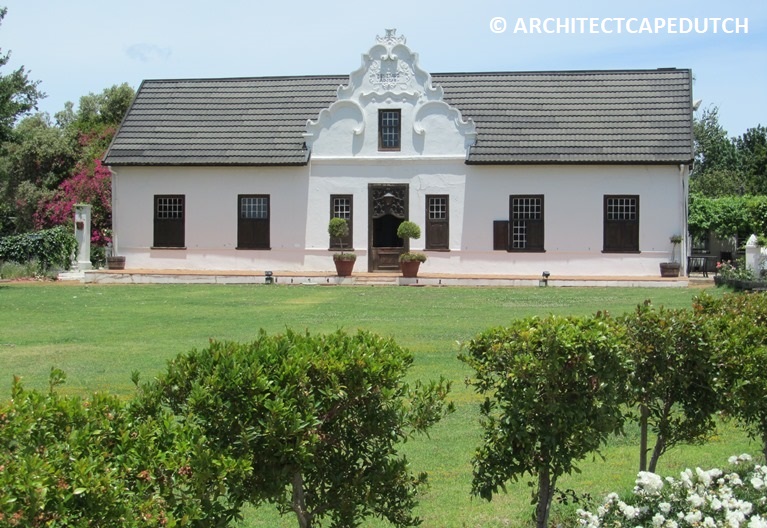
This is one of the earliest Cape Dutch houses to be built. The gable is in the early baroque style with elaborate swirling plaster bands on the front gable. The original roof was of thatch.
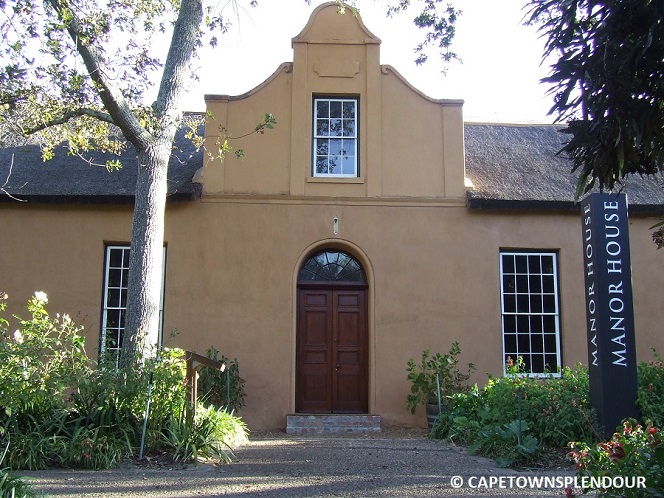
The rounded gables started to have more and more convaluted plaster bands, becoming the baroque style in full
blossom. This is the front gable at Spier wine farm.
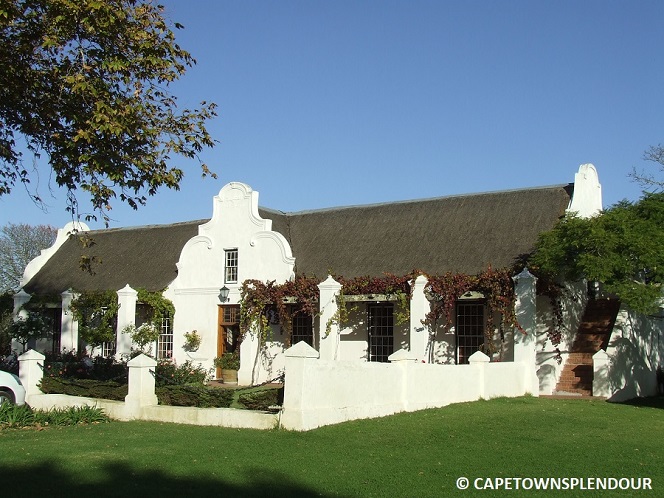
Another fine example of the baroque style is to be found at Vergenoegd, Just to the west of the
picturesque town of Somerset West.
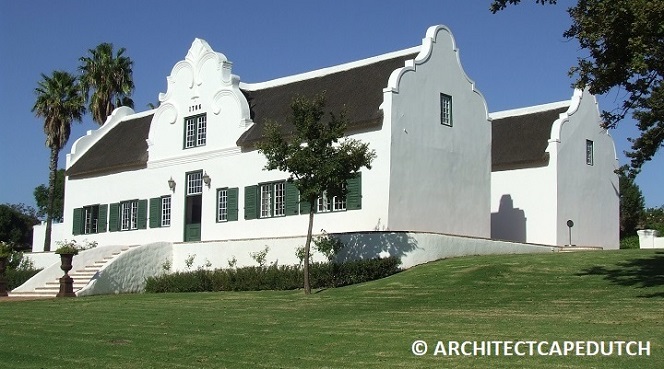
The sturdy farmstead at Webersburg is descidedly in the baroque style, with simpler "holbol" gables
on the sides of the wings of the h-shaped house.
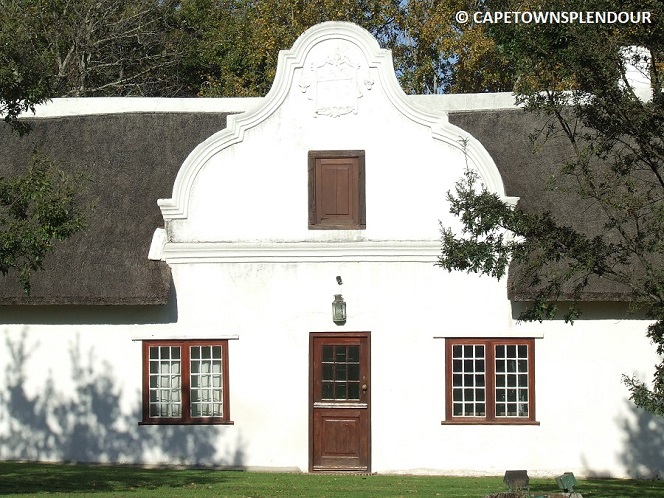
The house at Blaauwklippen is one of the earliest Cape Dutch farmhouses in Stellenbosch. The windows either side of the door lie neither within the gable nor to the outside of it.
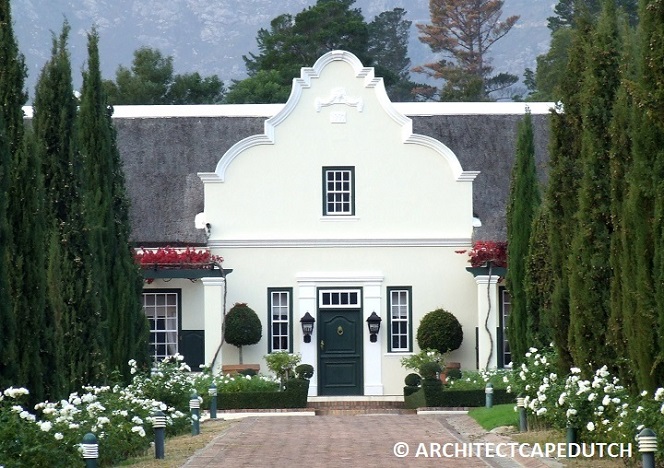
Most of the gables in Franschhoek are in the neoclassical style, the exception being this one at bo la motte, which is an elegent reworking of the original gable.
LATER FARM HOUSES - THE GRAND PENINSULA STYLE
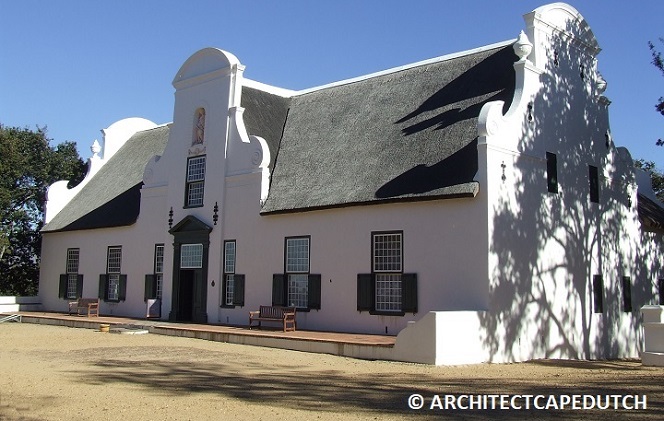
The most significant example of the style is to be found at the famous Groot Constantia farmhouse. This home was in turn based the governer's residence at the time, Newlands House. The gable style is also to be found at Rustenburg farm.
Visit
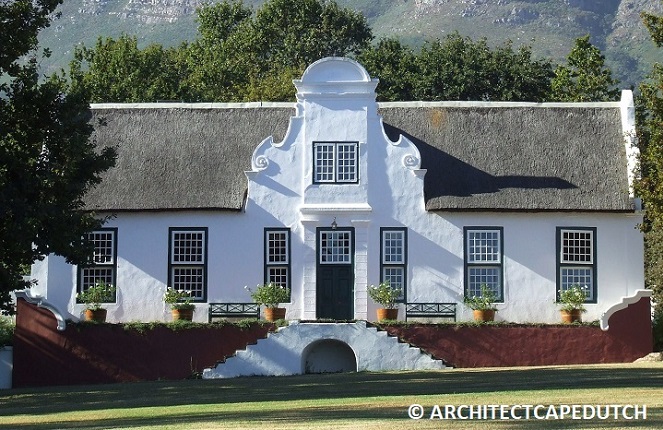
As referred to above, the Grand Peninsula style consisted of a pretruding middle section sweeping over the front facade up into the gable. The plaster here is rougher and the banding less articulated creating an even more raw country appeal.
THE NEOCLASSICAL STYLE
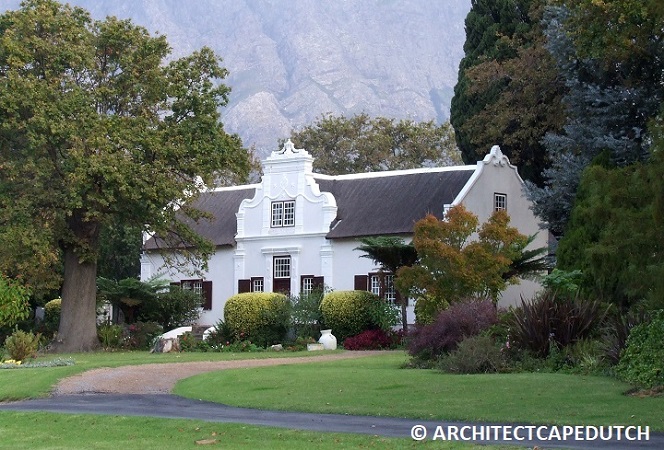
After the baroque style had run its course, the Neoclassical style began to dominate, featuring pedimented gables supported by pilasters and often flanked with decorative urns. The home at La Dauphine in Franschhoek is one of the finest examples.
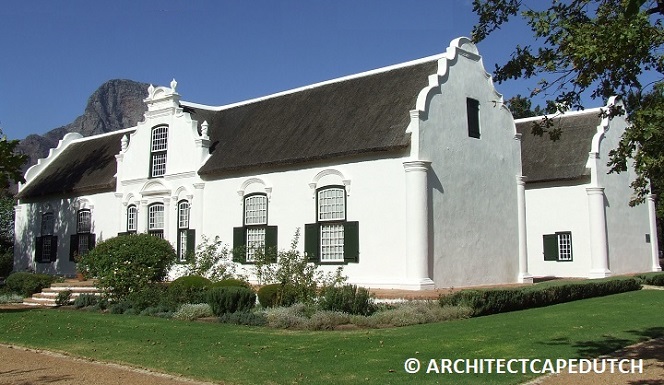
BOSCHENDAL
The gable at boschendal has a uniquely softened version of the neoclassical style gable, because of the flurry of segemnted circles at the top of the gable alongside a small triangular pediment.
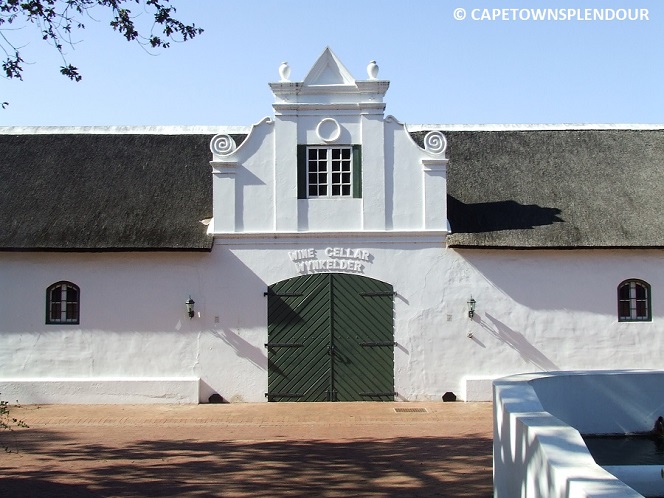
NEETHLINGSHOF
Although this is actually one of the outbuildings - the cellar - the gable is in fact a very fine example of the neolcassical style, having a tall triangular pediment, a circle as the chief decoration and scrolls where the urns normally go.
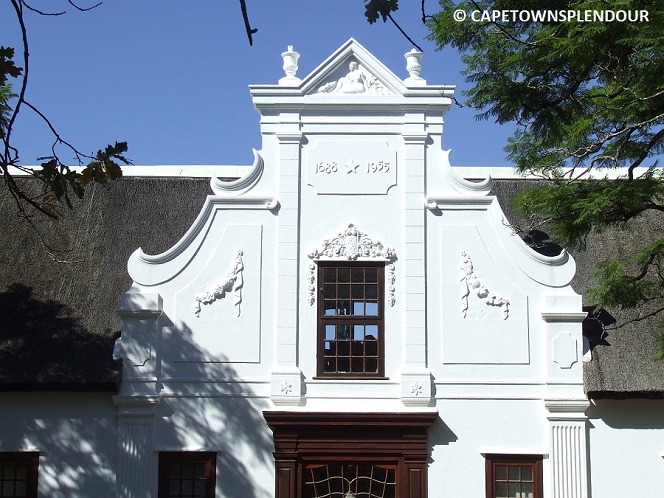
VREDE EN LUST
The neoclassical style gable at vrede en lust is distinctive, with strongly marked pediments pilasters and garlands.

HOUSE NORMANDY
The normandy farmhouse was designed by Beverley Hui architects for a wine farm near to Franschhoek. The plan is in u-shaped design.
MORE ON CAPE DUTCH
NEXT >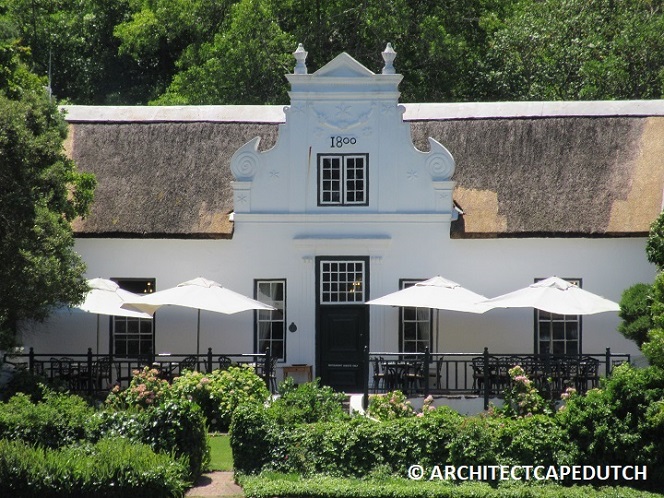
ZEVENWACHT
This gem is located in Kuilsriver and overlooks a small dam, with a small hill covered in oak trees and vineyards as the background. The gable is dated exactly 1800 and has beautiful neoclassical gable. The pediment is not too high, making it better proportioned than many others of its kind.
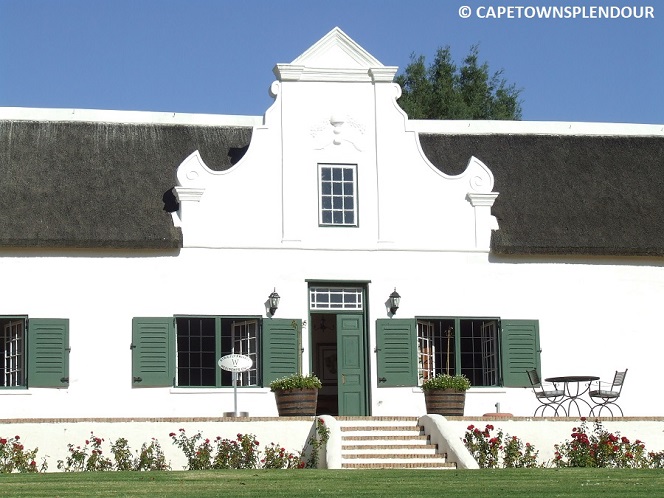
WEBERSBURG
The Neoclassical style was popular between 1780 to 1850. Interestingly one of the outbuildings of Webersburg is in the Neoclassical style, while the gable of the main house is baroque.
Visit TOP-ARCHTECTS for more on residential architects in the area. ************ SPACE FOR LINK ************** -->
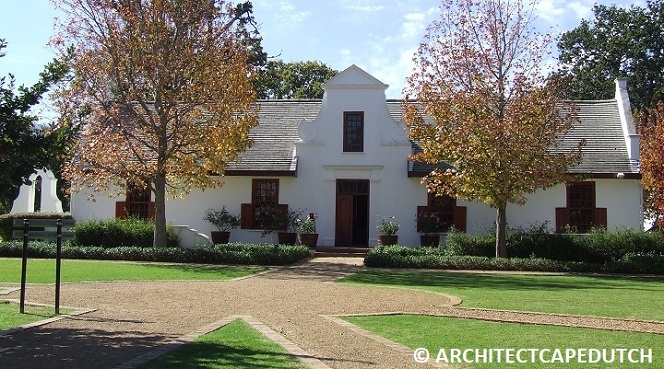
LOURENSFORD
A beautiful example of neoclassicm, however the tiles are less than authentic, but anyway barely visible behind the lovely autumn maple foliage.
VIEW MORE CAPE DUTCH HOUSES
NEXT >





